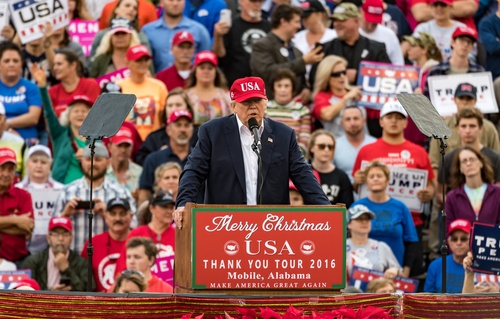Key Takeaways:
- A court ruled that Trump’s use of emergency powers to impose tariffs is illegal.
- Tariffs remain in place while the administration appeals the decision.
- The White House is exploring new ways to enforce tariffs if the appeal fails.
Introduction President Trump’s trade team is gearing up for a backup plan after a major legal blow. A federal court recently said Trump’s sweeping tariffs, imposed using emergency economic powers, are not legal. While the tariffs are still in effect during the appeal, the administration is preparing alternative strategies to keep the tariffs in place if the court’s decision stands.
What Happened? Trump’s trade policies have always been bold. To protect American industries, his administration imposed steep tariffs on imported goods. These tariffs act like taxes on foreign products, making them more expensive for U.S. consumers.
The tariffs were imposed using a law that allows presidents to take action during emergencies. However, a federal court recently ruled that Trump overstepped his authority. The court said the emergency powers Trump used were not legal grounds for the tariffs.
Although the court’s ruling is a setback, the tariffs won’t disappear immediately. A federal appeals court has allowed the tariffs to stay in place while the administration appeals the decision. But U.S. officials are wasting no time. They’re already brainstorming Plan B, just in case they lose the appeal.
What’s Next? If the court’s decision is upheld, Trump’s trade team will need to find a new legal way to impose tariffs. Officials are exploring several options.
-
Working with Congress: One idea is to work with lawmakers to pass new trade laws that give the president more power to impose tariffs. This could be a long shot, as Congress has been divided on trade issues.
-
Targeted Tariffs: Another option is to impose tariffs on specific industries rather than sweeping measures. This approach could be more legally sound and less likely to face challenges.
-
Negotiating Deals: The administration might also negotiate trade agreements with other countries. These deals could include measures that achieve similar goals without relying on emergency powers.
-
Reviewing Trade Laws: Officials are also looking into existing trade laws to see if there’s a different legal basis for the tariffs.
Challenges Ahead The situation is tricky. Imposing tariffs without legal backing could spark more lawsuits and international backlash. Other countries might retaliate, hurting U.S. exporters. Meanwhile, U.S. businesses and consumers could face higher costs if tariffs remain in place.
The Bigger Picture This court ruling is part of a larger debate over presidential power. Critics argue that Trump has stretched the limits of executive authority, while supporters say he’s taking necessary steps to protect American jobs.
The outcome of this legal battle could set a precedent for future presidents. It will also shape how the U.S. approaches trade in the years to come.
Conclusion For now, Trump’s tariffs remain in place. But the administration knows it needs a solid backup plan. Whether through Congress, new trade deals, or other legal strategies, the White House is determined to keep its trade policies alive. Stay tuned as this story unfolds.

